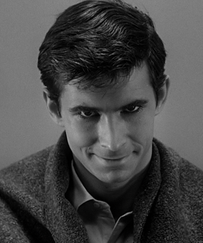 Anthony Perkins in 'Psycho' Anthony Perkins in 'Psycho' My readers already know I like to throw a psychopath or two into the mix when I write my novels. It's interesting that most of the respondents to a character competition that I ran said that, if chosen, they want to be cast as one of the bad guys! I think this taps into 'the shadows of the mind' theme of my own books, the dark side of our nature that many people harbour yet keep firmly in check. We're normally decent, law-abiding citizens, but we love to read about psychopaths, those dark, twisted individuals who transcend all boundaries to live life on their terms. Why else would crime, horror and thriller fiction be so popular? In this post, I've taken five of the most famous fictional psychopaths, and examined what makes them so memorable. 1. Patrick Bateman - American Psycho 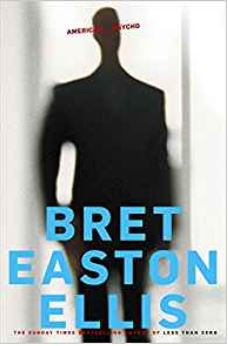 American Psycho is a novel by Bret Easton Ellis, telling the story of Patrick Bateman, a wealthy Manhattan businessman and serial killer. The novel is narrated in the first person by Bateman, who charts his life for us, murders included. He frequents nightclubs with his colleagues, snorting cocaine and swapping fashion advice, whilst all the time engaged to marry socialite Evelyn Richards and dealing with his fractured family relationships. After killing Paul Owen, one of his colleagues, Bateman takes over his victim's apartment, using it as a venue to conduct more murders. All the while, his grip over his urges lessens as the level of his sadism increases. Bateman indulges in rape, torture and mutilation, with a spot of cannibalism and necrophilia thrown in for good measure. To make matters more bizarre, he talks about the murders to his colleagues, who refuse to take him seriously, and then he begins experiencing hallucinations. The book examines whether Bateman is the victim of some psychotic delusion about being a serial killer, or whether what he’s describing in this stream-of-consciousness novel has really happened. Well, it's pretty clear Patrick Bateman displays many classic psychopathic characteristics! Shallow and largely concerned with material gain and superficial matters, he treats everything as a commodity, people included. Placing such distance between himself and his behaviour enables Bateman to excuse his actions, even ones as gross as cannibalism. Hence his remark after dining on a woman's flesh: ‘I just remind myself that this thing, this girl, this meat, is nothing.’ Women are definitely objectified throughout the novel, being reduced to the level of the ultimate consumable – meat. Relationships mean nothing to Bateman. His friends all appear alike to him, to the extent that he often confuses one for another. His love life is equally meaningless. Engaged to the shallow Evelyn Richards, their relationship is characterised by mutual loathing, and it is made clear they only stay together for social reasons. So why does Patrick Bateman kill? In true psychopathic style, he murders many of his victims because they make him feel inadequate, usually by having better taste than he does. This is a man to whom fashion, style, and social approval mean everything. As a serial killer, he slaughters indiscriminately, with no preferred type of victim and no consistent method of killing. Men, women, animals, even a child – nothing and nobody is off-limits for this man. Definitely one of the most chilling psychopaths we’ll be examining today! I believe Patrick Bateman fascinates us so much because he taps into the unease many people feel about unchecked consumerism, typified by the obsession with celebrities, gossip and fashion. Is this where our love of such things will lead, to individuals so shallow and twisted that they murder indiscriminately, in a society that appears uncaring about their crimes? Food for thought... 2. Hannibal Lecter - The Silence of the Lambs 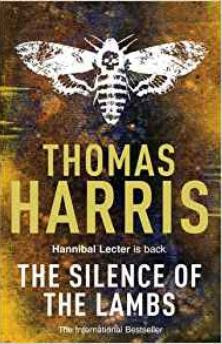 The Silence of the Lambs, written by Thomas Harris, is the sequel to his novel Red Dragon. Both novels feature the cannibalistic serial killer Dr Hannibal Lecter. Who, having read the book, will ever eat fava beans again without this man invading their thoughts?! Here's a summary of the plot. Jack Crawford, head of the FBI’s psychological profiling division, asks Clarice Starling, a young trainee, to present a questionnaire to the highly intelligent forensic psychiatrist and cannibalistic serial killer Hannibal Lecter. Lecter is serving nine consecutive life sentences for a series of brutal murders. Crawford's real intention, however, is to obtain Lecter's assistance in the hunt for a serial killer nicknamed ‘Buffalo Bill’, who skins his female victims after killing them. Lecter and Starling engage in a twisted game of traded information, in which he offers her cryptic clues about Buffalo Bill in return for details from her difficult childhood. Lecter's psychological make-up is explored in greater detail in Thomas’s other books, which reveal he was traumatised as a child by witnessing the murder and cannibalism of his younger sister. Thomas portrays Lecter as a cultured and sophisticated man, enjoying refined tastes in music and art, having served on the Baltimore Philharmonic Orchestra's board of directors. He is well educated, highly offended by bad manners in others, and speaks several languages. Not the type of character that immediately springs to mind when we think of serial killers, which helps to explain why he's so compelling. The man's an interesting juxtaposition of a violent serial killer along with a model of politeness and refinement, in stark contrast to the uncontrolled madness we often associate with sequential murderers. Although let's not forget the cannibalism - that's hardly refined behaviour! 3 - Annie Wilkes - Misery 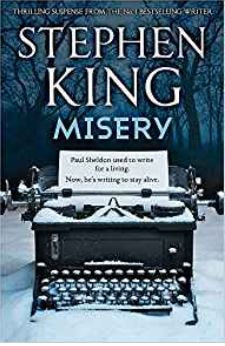 Misery is one of Stephen King’s horror novels. The narrative focuses on Paul Sheldon, a writer who pens mass-market appeal romances featuring the heroine Misery Chastain. Sheldon is rescued from a car crash by former nurse Annie Wilkes, who takes him to her home and cares for him, assuring him she’s his number one fan. When she discovers, however, that he’s killed off Misery at the end of his latest book, she becomes enraged, forcing him to write a new novel modifying the story. Sheldon discovers an old scrapbook of Annie’s, and learns from the newspaper clippings inside that she is a serial killer, who has murdered her own father, her college roommate, and several patients at the hospitals where she worked. Wilkes ends up holding Sheldon captive, treating him brutally. In one memorable chapter, she chops off one of his feet with an axe when he attempts to escape, then cauterises the wound with a blowtorch. Sounds like the actions of a psychopath to me! Annie Wilkes masks her warped nature behind an initially engaging front. The novel portrays her as paranoid, and suggests she may also have bipolar disorder, hidden behind her cheery facade. In the novel, she clearly suffers from depression as well as issues with self-harm, over-eating and an obsession with romance novels. In the way she holds sway over Sheldon, she displays all the characteristics of the ultimate control freak, desperate to wield power over her latest victim. In meeting Annie Wilkes, Paul Sheldon encounters misery of the greatest depth, before finally reclaiming his life and his writing at the end of the novel. It's a good job not all authors require such an impetus to discover their muse! Why does Annie Wilkes hold such enduring appeal? It may be partly because we're unused to the notion of female serial killers, especially ones who outwardly appear as homely and ordinary as she does. The contrast between this dumpy, dowdy, middle-aged woman, a former nurse, and her horrific crimes, is enormous. 4. Tom Ripley - The Talented Mr Ripley 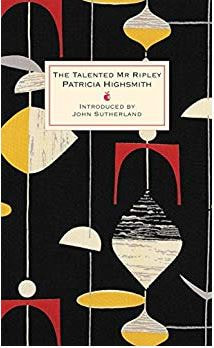 The Talented Mr. Ripley is one of Patricia Highsmith’s novels, written in 1955, and her first one to introduce the character of Tom Ripley, who appears in four other books by her. Ripley is a young confidence trickster living in New York, who is asked by a local shipping magnate to persuade his son, Dickie Greenleaf, to return from Italy to join the family business. Once in Italy, Tom becomes almost obsessed with Dickie and his wealthy lifestyle, which eventually grates on the man, as well as annoying his girlfriend Marge. Sensing that he is about to be cut loose by his new friends, Ripley murders Dickie and assumes his identity, living off his victim's trust fund. He manages to evade the suspicions of Dickie’s friends and father, as well as the Italian police, with everyone believing Dickie must have committed suicide. Tom's machinations end in a curious mix of triumph and paranoia, as he inherits Dickie’s fortune via a will he forged, but our charming psychopath is left with the uncertainty of never knowing if and when he’ll eventually get found out. In subsequent novels, Ripley involves himself in several more murders, often coming close to being caught or killed, but always escaping detection. Highsmith introduces some background material that may partly explain Ripley’s psychology. Orphaned at age five, he was raised by his aunt, a cold, stingy woman who mocked him, leading him to attempt to run away as a teenager. Highsmith's portrayal of Ripley is as a suave, agreeable and utterly amoral con artist, capable of great charm. In many ways, he resembles our friend Hannibal Lecter. Like Lecter, Ripley enjoys the finer things in life, spending time painting or studying languages. Also, like the good psychiatrist, he comes across as polite and cultured, disliking people who lack such qualities. He's also devoid of conscience, admitting in a later novel that guilt has never troubled him, although he claims to detest murder unless it is necessary. Ripley's character engages us, drawing the reader into the metafictional con that he perpetuates on us. This is a man who's cultured, charming and quick thinking, living the good life as he cheats and murders his way around Europe. A lifestyle that pulls us into the novel with its seductive appeal - no wonder both the book and its film version have proved so popular! 5. Cathy Trask - East of Eden 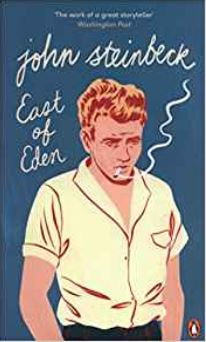 An amazingly powerful book that, for me, recovered quickly from its sluggish beginning to become enthralling. Based on pre- and post-lapsarian themes, the novel follows the relationship between Adam and Cathy Trask as Steinbeck's parallel to the Biblical Adam and Eve, along with the tension between their sons, Caleb and Aron. The novel seems to be primarily about love, as well as examining the effects of its absence. Cathy Trask, who we're concentrating on here, is unable to love anyone, even herself, and her coldness destroys her husband and her son Aron. Cathy, later known as Kate, bears many of the hallmarks of a psychopath. A twisted character, this, one capable of recommending that her husband toss their new-born twins into a well. Some critics have commented that her character lacks credibility, but I'd guess this reflects more the social attitudes towards women at the time of the book's publication. She's amoral and psychopathic, something that may well have offended 1950s sensibilities about women's roles. She is, after all, no domestic goddess or even a good wife or mother. With respect to the Biblical themes of good and evil, Steinbeck moves beyond representing Cathy as Eve, tempted by the serpent in the Garden of Eden; Cathy is the serpent as well as Eve. He emphasises this by portraying Cathy in snake-like terms; for example, when she swallows, her tongue flicks around her lips. In the book, Steinbeck describes Cathy as having a malformed soul, being cold and, in true psychopathic style, incapable of caring for anyone. Her misdeeds start with false accusations of rape and proceed to her setting fire to her family's home, killing both her parents. After being rescued by Adam when badly injured and subsequently marrying him, she gives birth to twin boys, before shooting her husband in the shoulder to escape the monotony of motherhood and married life. She ends up working as a prostitute in a local brothel, renaming herself Kate, eventually inheriting the business after murdering the owner. Steinbeck portrays Cathy as a delicate blonde whose beauty fools most of the people she encounters, her true nature being evident in her eyes, which he describes as cold and emotionless. Samuel Hamilton, a minor character in the novel, says that “the eyes of Cathy had no message, no communication… they were not human eyes”. Why does Cathy Trask entrance the reader so much? There's the fact that, like Annie Wilkes, she offers the novelty value of being a female psychopath. She's ordinary, too, although not to the same drab extent as Annie Wilkes. No, she's more the kind of psychopath we’re likely to meet in real life, rather than being an out-and-out con artist like Tom Ripley or a rarefied socialite like Patrick Bateman. Neither is she driven by the same dark forces that urge Hannibal Lecter to kill. Instead, she's a woman who goes about her daily life as we all do, but unlike the rest of us, she kills whoever stands in her way, having been born soulless, evil from birth. Who's your favourite fictional psychopath? 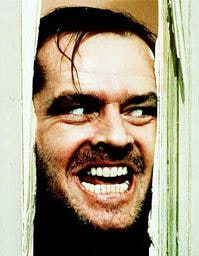 In this blog post, I've only been able to examine a tiny proportion of the vast array of fictional psychopaths that novelists have brought us throughout the years. Google 'famous fictional psychopaths' and you'll get over a million results! I chose these five characters because they cover both male and female, young and old, rich and poor, ones created through circumstance (Hannibal Lecter) and those born evil, such as Cathy Trask. What sociopathic characters have been memorable for you? Perhaps Jack Torrance from Stephen King's The Shining? Frederick Clegg from John Fowles's The Collector? Or is Amy Dunne from Gillian Flynn's Gone Girl more your style? Leave a comment and let me know!
1 Comment
Victoria Brauker
14/1/2022 00:35:24
Re-reading East of Eden again after decades and told my daughter that it was the first serial killer book I ever read. I agree with you regarding its initial reception and that readers in 1952 wouldn't have had as much exposure to female, even male, psychopaths. I find Cathy the character around which the entire novel turns, and because she can be likened to the Christian Bible's Eve, she becomes the main antagonist who is entirely responsible for the downfall of man. Interestingly, re-reading the novel in 2022, I am surprised at how many racist terms and preconceptions I missed way back when in the 1980's.
Reply
Leave a Reply. |
Categories
All
Subscribe to my blog!
Via Goodreads
|
Join my Special Readers' group and receive a free copy of 'Blackwater Lake'!
|
Privacy policy Website terms and conditions of use
Copyright Maggie James 2018 - current date. All rights reserved.
Copyright Maggie James 2018 - current date. All rights reserved.
 RSS Feed
RSS Feed
